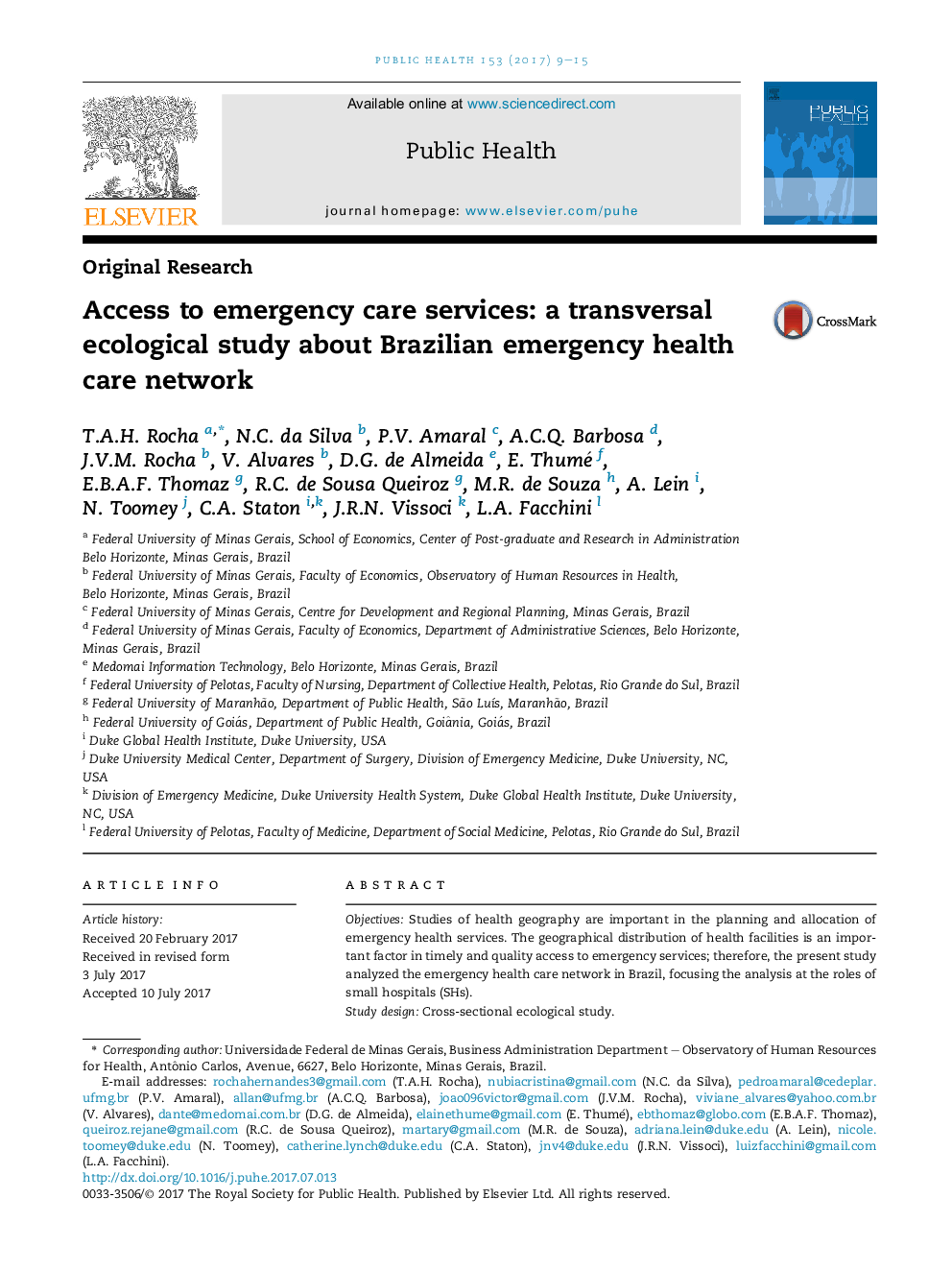| کد مقاله | کد نشریه | سال انتشار | مقاله انگلیسی | نسخه تمام متن |
|---|---|---|---|---|
| 5122642 | 1487190 | 2017 | 7 صفحه PDF | دانلود رایگان |
- There are imbalances in emergency distribution of healthcare facilities in Brazil.
- There is a concentration of hospitals in more developed areas.
- There are access gaps in rural areas as well as in the Amazon region.
- Rethinking the roles attributed to small hospitals can improve access to emergency services in Brazil.
ObjectivesStudies of health geography are important in the planning and allocation of emergency health services. The geographical distribution of health facilities is an important factor in timely and quality access to emergency services; therefore, the present study analyzed the emergency health care network in Brazil, focusing the analysis at the roles of small hospitals (SHs).Study designCross-sectional ecological study.MethodsData were collected from 9429 hospitals of which 3524 were SHs and 5905 were high-complexity centers (HCCs). For analytical purposes, we considered four specialties when examining the proxies of emergency care capability: adult, pediatrics, neonatal, and obstetric. We analyzed the spatial distribution of hospitals, identifying municipalities that rely exclusively on SHs and the distance of these cities from HCCs.ResultsMore than 14 and 30 million people were at least 120Â km away from HCCs with an adult intensive care unit (ICU) and pediatric ICU, respectively. For neonatal care distribution, 12% of the population was more than 120Â km away from a health facility with a neonatal ICU. The maternities situation is different from other specialties, where 81% of the total Brazilian population was within 1Â h or less from such health facilities.ConclusionOur results highlighted a polarization in distribution of Brazilian health care facilities. There is a concentration of hospitals in urban areas more developed and access gaps in rural areas and the Amazon region. Our results demonstrate that the distribution of emergency services in Brazil is not facilitating access to the population due to geographical barriers associated with great distances.
297
Journal: Public Health - Volume 153, December 2017, Pages 9-15
